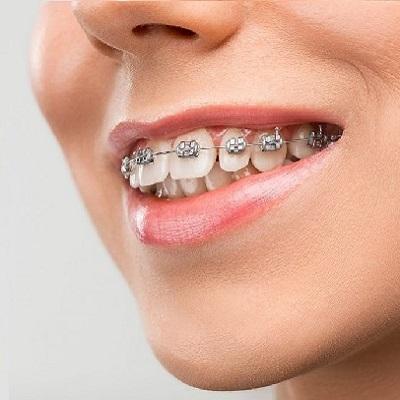A beautiful smile doesn’t just boost confidence—it plays a major role in your overall oral health. However, not everyone naturally develops perfectly aligned teeth. Many people grow up with crowding, gaps, or bite issues that go unnoticed until they start causing discomfort or cosmetic concerns. Braces are one of the most reliable orthodontic treatments to correct these issues, but how do you know if you actually need them?
If you’re unsure whether braces are right for you, this guide explains the most common signs that indicate it may be time to consider orthodontic treatment.
Crowded or Overlapping Teeth:
One of the biggest signs you may need braces is crowded teeth. When there isn’t enough space in your jaw for all your teeth to align properly, they overlap, twist, or grow at odd angles. Crowding makes it hard to clean between teeth, increasing the risk of:
-
Cavities
-
Plaque buildup
-
Gum disease
Braces gradually shift your teeth into proper alignment, giving you both a cosmetic and health advantage.
Large Gaps Between Teeth:
On the opposite end of crowding is spacing. If you have noticeable gaps between your teeth, braces can help close them. Gaps may be caused by:
-
Missing teeth
-
Smaller-than-average teeth
-
Natural jaw growth
While some people see gaps as a stylistic feature, larger spaces can lead to food lodgement and gum irritation. Braces safely close these spaces for a healthier smile.
Difficulty Biting or Chewing Food:
If biting into an apple or chewing steak feels uncomfortable, it may indicate a problem with your bite. A misaligned bite can put pressure on your:
-
Jaw joints
-
Muscles
-
Teeth
Over time, this can lead to chronic jaw pain, uneven wear, or headaches. Braces correct the bite so your teeth meet properly, making chewing easier and more comfortable.
Overbite or Deep Bite:
An overbite occurs when your upper front teeth cover too much of your lower front teeth. In severe cases, the lower teeth can even touch the roof of the mouth. A deep bite can cause:
-
Gum damage
-
Excessive wear on lower teeth
-
Speech issues
Braces help bring the upper and lower teeth into proper alignment, preventing long-term damage.
Underbite:
In an underbite, the lower teeth sit ahead of the upper teeth. This often stems from jaw growth issues and can cause:
-
Difficulty chewing
-
Facial imbalance
-
Faster tooth wear
Early orthodontic intervention is especially effective for underbites, although adults can still benefit from braces or jaw-correcting appliances.
Crossbite:
A crossbite happens when some upper teeth sit inside the lower teeth instead of outside. This can affect:
-
A single tooth
-
Several teeth
-
The entire bite
Crossbites can lead to gum recession, enamel wear, and asymmetrical jaw development. Braces combined with expanders often fix the issue effectively.
Open Bite:
If your front teeth don’t touch even when your mouth is fully closed, you may have an open bite. This condition makes biting into foods like sandwiches or pizza difficult. It is often caused by:
-
Thumb sucking
-
Tongue thrusting
-
Jaw development issues
Braces can close the open space and create a functional, healthy bite.
Frequent Jaw Pain or Clicking Sounds:
Jaw pain, clicking, or popping noises in the jaw joint often relate to bite issues that braces can correct. When teeth don’t fit correctly, it strains the temporomandibular joint (TMJ), leading to discomfort or headaches. Correcting alignment often reduces these symptoms dramatically.
Speech Problems:
Certain speech issues, such as lisping or difficulty pronouncing certain sounds, can be linked to misaligned teeth. If your tongue cannot move around your mouth properly due to crooked teeth or gaps, braces can help restore clear pronunciation.
Breathing Through the Mouth;
Chronic mouth breathing can sometimes be linked to bite problems or narrow dental arches. While breathing issues may also involve nasal or sinus conditions, orthodontic evaluation helps determine whether braces may help improve airflow and jaw development.
You Feel Self-Conscious About Your Smile:
Beyond physical symptoms, many people choose braces because they feel insecure about their smile. Confidence plays a huge role in social and professional life. If crooked teeth or gaps make you hesitant to smile, braces can make a powerful difference.
Genetic Factors and Early Warning Signs in Children:
Children often show early signs of alignment issues, such as:
-
Early or late loss of baby teeth
-
Thumb sucking after age 4
-
Jaws that click or pop
-
Teeth that don’t seem to come in straight
Early orthodontic evaluation (usually between ages 7 and 12) helps catch problems before they worsen.
When to See an Orthodontist:
If you notice one or more of these signs, it’s time for a consultation. An orthodontist will perform:
-
X-rays
-
A bite analysis
-
A visual examination
This helps determine the best treatment plan, whether it's traditional metal braces, ceramic braces, or clear aligners.
People in Pakistan often research teeth braces in Islamabad and want to know about teeth braces cost before starting, and an orthodontist can give an accurate estimate after an assessment.
Final Thoughts:
Braces are not just about achieving a beautiful smile—they correct deeper structural issues that affect your oral health, comfort, and confidence. Recognizing the early signs that you need orthodontic treatment can save you from long-term complications and extensive procedures later in life.
If you’re experiencing any of the symptoms listed above, schedule an orthodontic evaluation to discover the best path toward your perfect smile.
For more information visit Dental Clinic Islamabad.

